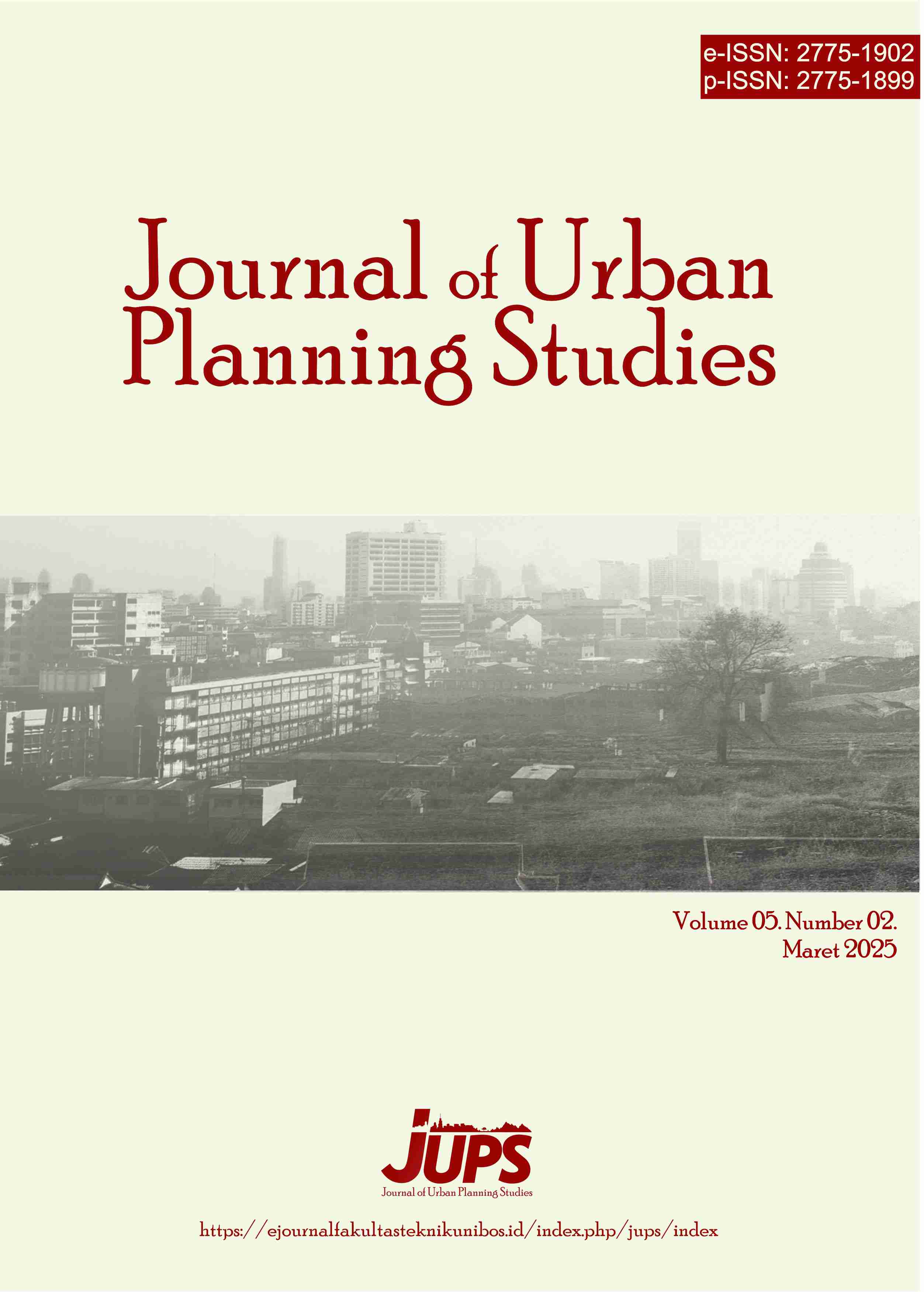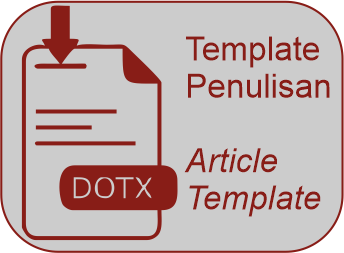Arahan Mitigasi Bencana Banjir Bandang Kecamatan Mambi, Kabupaten Mamasa
DOI:
https://doi.org/10.35965/jups.v5i2.700Kata Kunci:
Banjir Bandang, Kerawanan, Kerentanan, MitigasiAbstrak
Tujuan penelitian ini adalah untuk mengetahui bagaimana tingkat kerawanan dan kerentanan bencana banjir bandang di Kecamatan Mambi, Kabupaten Mamasa, serta merumuskan arahan mitigasi bencana banjir bandang di Kecamatan Mambi, Kabupaten Mamasa. Penelitian ini menggunakan metode deskriptif dengan menggunakan pendekatan kualitatif dan kuantitatif, yang menggabungkan data primer yang dikumpulkan melalui survei lapangan dan wawancara, serta data sekunder yang bersumber dari berbagai referensi literatur. Metode analisis yang digunakan dalam penelitian ini berupa analisis Superimpose (overlay) dan analisis deskriptif. Hasil dari penelitian ini adalah terdapat 3 (tiga) klasifikasi tingkat kerawanan dan kerentanan bencana banjir bandang di Kecamatan Mambi Kabupaten Mamasa, yaitu kelas rendah, sedang, dan tinggi serta arahan kebijakan mitigasi berupa mitigasi struktural dan non struktural.
Referensi
Abuzied, S. M., et al. (2016). Effective strategies for flood risk mitigation. Natural Hazards, 82(1), 123–139.
Adi, S. (2013). Flash flood dynamics in tropical regions. International Journal of Environmental Studies, 70(2), 145–158.
Arachchige, U. J. (2015). Definition and characteristics of flash floods. Hydrology and Earth System Sciences, 19(4), 2345–2356.
Brody, S. D., Highfield, W. E., & Blessing, R. (2021). Land use controls and flood mitigation: How effective are planning strategies?. Journal of Planning Literature, 36(1), 50–65.
Demeritt, D., Nobert, S., Cloke, H., & Pappenberger, F. (2020). The European Flood Alert System: Assessing the effectiveness of warnings and evacuation procedures. Journal of Flood Risk Management, 13(4), e12604.
Herawati, H., et al. (2022). Indonesia's disaster risk profile. Journal of Disaster Research, 17(3), 123–135.
Jonkman, S. N., & Dawson, R. J. (2019). Flood risk reduction through structural measures: Current approaches and future challenges. Natural Hazards, 99(2), 1235–1255.
Kubal, C., Haase, D., Meyer, V., & Scheuer, S. (2019). Integrated urban flood risk management: A strategy for risk reduction in the face of climate change. Journal of Hydrology, 573, 123–132.
Kundzewicz, Z. W., Hegger, D. L., & Matczak, P. (2018). Flood-risk reduction: Structural measures and the non-structural response. Natural Hazards and Earth System Sciences, 18(12), 3087–3102.
Kusumo, P., & Nursari, E. (2016). Zonasi tingkat kerawanan banjir dengan sistem informasi geografis pada DAS Cidurian Kab. Serang, Banten. String (Satuan Tulisan Riset dan Inovasi Teknologi), 1(1), 66–73.
Maskrey, A., Jain, G., & Lavell, A. (2020). Community-based disaster risk reduction. Disaster Prevention and Management: An International Journal, 29(5), 673–684.
Pardeshi, S. D., Autade, S. E., & Pardeshi, S. S. (2013). Landslide hazard assessment: Recent trends and techniques. SpringerPlus, 2(1), 523.
Pinos, J., & Timbe, L. (2019). Flood risk assessment and management: Review of methodologies and challenges. Water, 11(10), 2071.
Rahman, A., et al. (2022). Indigenous wisdom in flash flood adaptation and mitigation. Environmental Science & Policy, 120, 45–56.
Reichenbach, P., Rossi, M., Malamud, B. D., Mihir, M., & Guzzetti, F. (2018). A review of statistically-based landslide susceptibility models. Earth-Science Reviews, 180, 60–91.
Taufik, Q., & Firdaus, D. (2012). Pemetaan ancaman bencana tanah longsor di Kabupaten Konawe. Jurnal Aplikasi Fisika, 8(1), 36–40.
Thieken, A. H., Kienzler, S., Kreibich, H., Kuhlicke, C., & Merz, B. (2022). Enhancing flood resilience through effective public engagement and risk communication. Environmental Science & Policy, 127, 21–30.
Wang, L., et al. (2023). Integrating hydrological models for improved flash flood risk assessment. Water, 15(9), 1700.
Wohl, E., Lane, S. N., & Wilcox, A. C. (2021). The role of upland forest restoration in reducing flood risks downstream. Earth Surface Processes and Landforms, 46(12), 2461–2475.
Yan, X., Huang, J., & Qin, H. (2020). Effectiveness of detention basins in urban flood risk management: Case studies in China. Urban Water Journal, 17(8), 679–690.
Zhou, Y., et al. (2024). Advances in flash flood risk assessment: A multidisciplinary approach. Journal of Hydrology, 610, 127–139.
##submission.downloads##
Diterbitkan
Cara Mengutip
Terbitan
Bagian
Lisensi
Hak Cipta (c) 2025 Alber Kala, Rahmawati Rahman, Tri Budiharto, Ahmad Faqhruddin Abdur-Rabb

Artikel ini berlisensi Creative Commons Attribution 4.0 International License.













